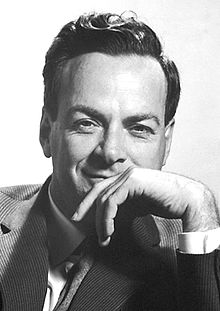It is truly commendable that as one collective living species, we humans have been continuously building a great knowledge base, in ‘little’ steps, over the years and years of our existence. We’ve also suffered and we continue to live through terrible problems that shadow our very world – natural disasters as well as man-made crisis. The manifolds of our human weaknesses, deficiencies, and atrocities and our tendency of often repeating the most classical “human errors” make us vulnerable and responsible somewhere down the line. Yet as the “mankind” we continuously thrive, we keep trying to rebuild, we fight our own mistakes and we endure to be the most influential of all other living forms on this planet Earth, our ‘home’ inside this vastness that we call – the Universe.
One of the most straightforward ways of finding a decent perspective on this big picture can be simply by looking at one of the fundamental dimensions-“length”. Here is a nice “Universcale” http://www.nikon.com/about/sp/universcale/scale.htm, summarizing the relative large (or small)-ness of objects (and concepts) we know of. Fairly suggestive numbers along with definitions of the relevant units of length make it a fun and informative quick reference tool. Please click on the above link and explore (it is simple, interesting and interactive) for a little while, it shall then bring us to see the quite obvious point here!

Image source: Nikon Universcale
Isn’t it simply amazing to visualize this h-u-g-e “scale” of the Universe? On the lower side, the scale goes down to lengths in the order of “femtometre” (1 fm = 10-15 m i.e. a quadrillionth of a meter e.g. relevant to sizes of the elementary constituents of matter). On the upper side, one can speak in orders of billions of Light-years (1 Light-year is the distance that light travels through free space in one year e.g. the upper bound diameter of “Observable Universe” [ref.1] is estimated (as of now) to be ~93 billion Light years (or ~ 8.8 X 1026 m). Within these unbounded extremes, the sizes and distances of most of all that we see, know or have theoretically estimated are duly distributed.
As interesting this range of astronomically small and large figures are (for those interested in numbers), one definite take away for all of us is perhaps the relative measure of largeness or smallness in all that we perceive. If we look at ourselves as an object on this scale, it is funny to think, to the microbial world we probably appear like unrealistic giant monsters or machines! On the other hand, with respect to the size of our own galaxy (which itself is a speck within the Universe), we are just way too minuscule to be even distinguished as randomly suspended dust particles in Space (and in this picture how tiny are our everyday problems, then!).
No matter who we are, how “large” or “small we may seem to each other, whatever our most immediate and apparent concerns may be, if we are able to see through this picture, we will most definitely wonder. Actually, we probably need to take a moment and wonder! With all that participates in this abundant and dynamic cosmos and chaos, there is also “life” (definitely one of the most interesting processes we know of) following which we can see our very existence. There are all the good reasons to be fascinated with this supremely special reality that we exist. And if we are able to truly appreciate this, it might get a bit more likely to acquire that much-needed inspiration which nature offers us inherently- the inspiration to use this finite lifetime of ours in meaningful attempts. The best part is there is no lack of fascinating subjects and areas to work on and there is no end to observing, questioning, exploring and delving deeper, so it can never really get boring!

Richard. P. Feynman
Image source: Wikipedia
It is a good place to borrow what Richard Feynman [ref. 2] said (if one doesn’t already know him from his unputdownable “Feynman’s lectures in Physics” and “Surely you’re joking Mr. Feynman”, – he was one curious smart man, a Nobel laureate physicist, a doyen of quantum electrodynamics whose contributions to modern physics remain undeniable and whose depth of knowing something and explaining that shall always inspire the students) –
“Nobody ever figures out what life is all about, and it doesn’t matter. Explore the world. Nearly everything is really interesting if you go into it deeply enough.”
This is a wise food for thought we may want to pause at and ponder over for a little longer time.. 🙂
Footnotes and References
- Wikipedia article on “Observable Universe”- https://en.wikipedia.org/wiki/Observable_universe
- Wikipedia link about Richard P. Feynman- https://en.wikipedia.org/wiki/Richard_Feynman\
* “The Big Picture” happens to be the title of an interesting book authored by Sean Carrol which might be a good read at some point.

